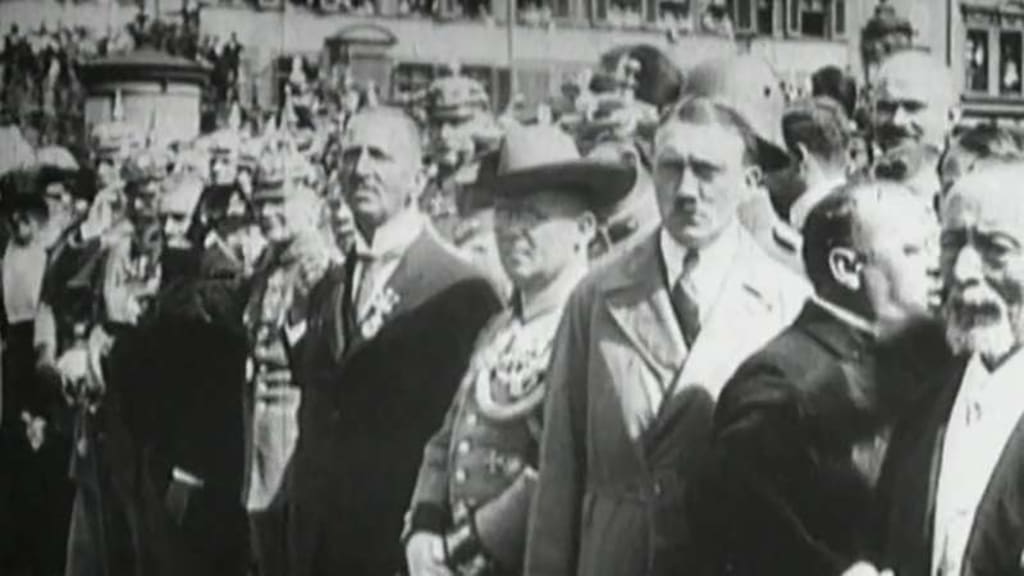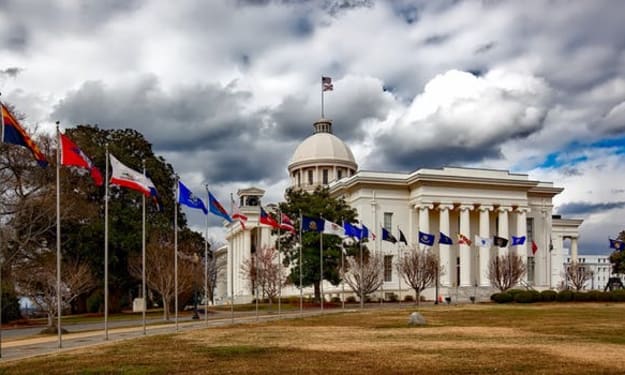Today's History Lesson...
Beginnings of an essay about Germany in 1920s

“Germany experienced a period of political calm, economic development and social progress in the mid-1920s.”
How far do you agree with this judgement?
The years 1924-29 are often described as the ‘Golden Age of Weimar’ because of their stability, economic security and improved living standards – at least in relation to previous years. The seeds of German recovery were planted in the autumn of 1923, when Gustav Stresemann was elevated to the chancellorship. Stresemann and his ministers formulated plans to arrest the hyperinflation crisis by introducing a new currency, the Rentenmark, and fixed its value to gold prices. The government announced its determination to meet reparations payments and sought international assistance to do so. The US-led Dawes Plan was finalised in April 1924 and implemented four months later. The Stresemann years of 1924-29 have often been portrayed as the “golden years” of Weimar Germany; however this idea has been challenged. During this period there was an element of political calm but it was mainly a failure of coalition governments to agree on any important issues. Economic development did occur but was minimal, and the period was one of slow economic growth. Similarly, there were several signs of social progress, but the years were significantly characterised by cultural polarisation.
Politically, it can be argued that Germany did experience a political, calm with the introduction of the Dawes Plan in 1924, where a loan was agreed between the US and Germany to kick start the German industry. Added to this, in 1926, Germany joined the League of Nations and promised no war.
Between 1924 and 1928 the SPD resisted becoming involved in the formation of any viable coalition government because they believed that a coalition with the “bourgeois” parties would lead to a compromise of party ideals. As a result, the influence of the SPD in the Reichstag was significantly reduced and the parties rejection of political responsibility undermined the democratic system; contradicting the key concepts of representation and accountability. The Locarno Pact ensured a permanent demilitarisation from the Rhineland treaties with France and Belgium over the borders in late 1925. Furthermore, in 1926, the Treaty of Berlin was signed with Russia; however, this went against the Treaty of Versailles. Also, another argument which can be put forward to suggest that Germany did not experience a political calm, would be that the main democratic parties couldn’t work together – seven governments were formed and dissolved during the 1924-29 years, and only two of these claimed a working majority. Furthermore, Chancellors fell out over very petty things such as the use of the imperial flag. Overall, the mid 1920s cannot be said to have been years of political stability. Despite the reduction in threats to the Weimar state, the parliamentary system failed to mature and develop - a political stagnation developed, not a political calm.
Germany saw production increased in 1928, with heavy industry back to its former 1913 levels. This was due to more efficient production. There was a definite increase in monetary stability which can be attributed to the introduction of new currency in 1923, the Rentenmark, The monetary stability brought about by the establishment of the Rentenmark was a great improvement after the hyperinflation of 1923 and helped the classes who had suffered most during this time. Exports increased between 1925 and 1929 by 40% and real wages rose every year from 1924 – 1930. By the late 1920s industrial sector wages had drawn level with those of the middle class – and in some cases exceeded them. While unemployment fell generally, it remained high amongst white collar professions. Government documents from April 1928 reveal almost 184,000 middle-class workers seeking employment – and almost half of them did not qualify for unemployment relief from the state. Consequences of the Dawes Plan also brought about a significant influx of foreign capital. However, this unstable foreign base to stabilising the economy meant, in other words; whilst Germany’s economy did recover, it had no stable foundations as it was based on foreign loans. Added to this, due to Germany’s over reliance on foreign loans, if the world’s economy collapsed, the German one would too. The government put tariffs on imports, it didn’t solve the problems. By 1929, Germany had borrowed over 342 million Reichsmarks. The uneven growth of the economy meant there were production declines in 1926 and there were more imports than exports. Also, there was a large decline in agriculture – so farmers were in debt. In 1929, unemployment was at its highest with 1.9 million people out of work. These unemployment figures question the image of the 1920s as the “golden years” of Weimar Germany. By 1928, 3 million Germans, accounting for 15% of the workforce, were unemployed. These figures suggest that many of the economic problems which would later surface were actually rooted in these supposed years of stability.
There was a vast amount of social progress within Germany during the mid 1920s, for example, Social Welfare was written into the constitution – meaning more attention was put on pensions and sickness benefit. After the war there was an increased need for welfare and in 1924 the system for claiming relief and assessing the needs of the claimant was codified. The German state began to pay for social housing for the first time and encouraged a very modern, westernised culture. Other changes in the law signalled social progress, such as the 1927 Labour Exchanges and Unemployment Insurance Law which introduced unemployment insurance. Thus the welfare state was significantly increased. In general terms of public health, standards improved. Better health insurance and medical provision led to a reduction in deaths from certain diseases such as tuberculosis and pneumonia. The position of women mainly remained the same as the proportion of women working outside the home increased only minimally. Although there was a growing number of women in new areas of employment in the civil service, teaching and social work, attitudes towards women working were generally conservative.
Arguably, more significant than these minimal signs of social progress was the cultural polarisation which existed in this period. During the mid 1920s, a new style unique to the Weimar Republic developed and manifested itself in the media. The new movement stressed objectivity and matter-of-factness. Alienation from the Weimar Republic was a common theme of writing, theatre and cinema highlighted social issues with a new seriousness and architecture was dominated by the Bauhaus movement. However, with all this new social freedom, came problems, The baby boom of the 1920s, saw a large population increase which wasn’t good for the unemployment levels. The cultural developments which did take place did nothing to help stabilise the Weimar Republic; instead they only served to further divide Germany society, this time on cultural lines. The new cultures showed no particular support for Weimar Germany and its values, thus this limited form of social progress did nothing to improve the stability of the Weimar Republic.
The statement: “Germany experienced a period of political calm, economic development and social progress in the mid 1920s” is only true to an extent. Germany did experience limited political calm, and a somewhat greater degree of economic development and social progress. However this statement is broad and ignores the complexities of German politics, society and economics in the mid 1920s. Although there were suggestions of a political calm, many problems were evident within German politics at this time such as political paralysis. There was monetary stability and cases of economic development during these years, far greater than social or political stability and improvements. However the causes of this economic progress and stability can be considered superficial, as fundamental weaknesses in the German economy ensured it remained far from stable. Lastly, there were improvements in public health and welfare services but they were limited and imperfect. Social developments were evident but what may be considered social progress by some, ignited hostility in others, resulting in cultural polarisation. This period saw the beginning of economic pressures and social discord which were to worsen after 1929.
That should put you in good sted for continuing. I wish you all the best for your History degree. I did it for GCSE and A-LEVEL. It's a wonderful subject, but academically can be very hard. You'll get there though, just try to remember dates, and the rest should fall into place :)
About the Creator
Rebecca Smith
She/Her
Just be f*cking nice 🙌






Comments
Rebecca Smith is not accepting comments at the moment
Want to show your support? Send them a one-off tip.